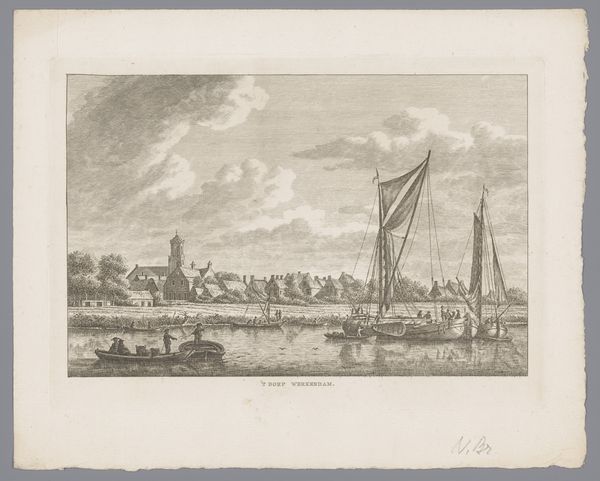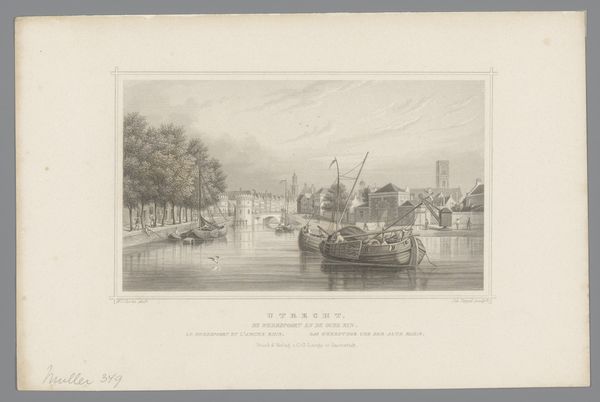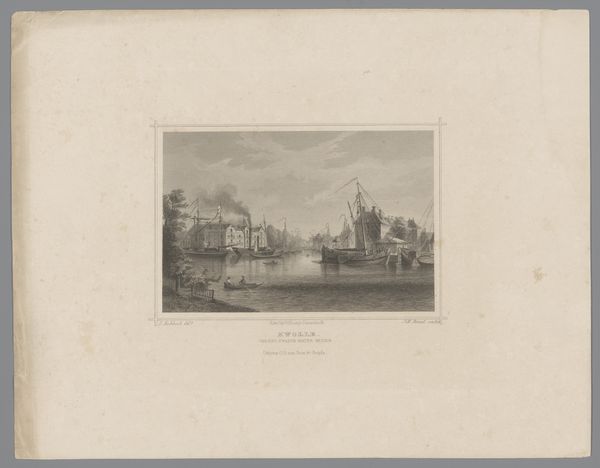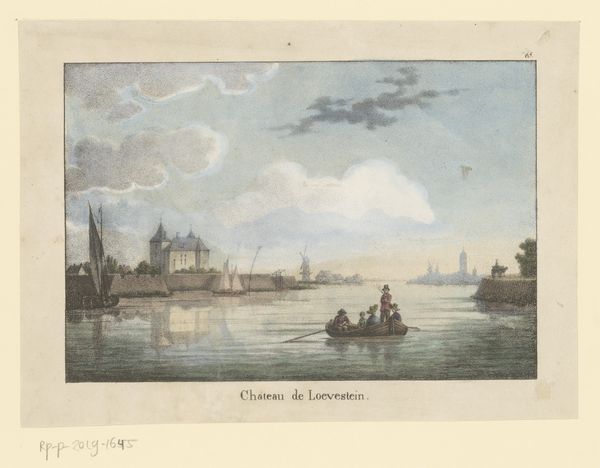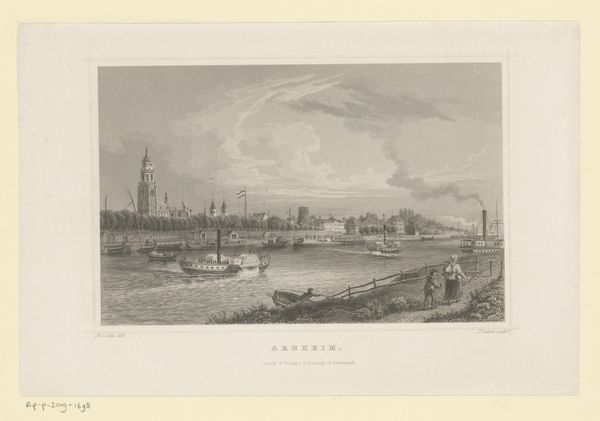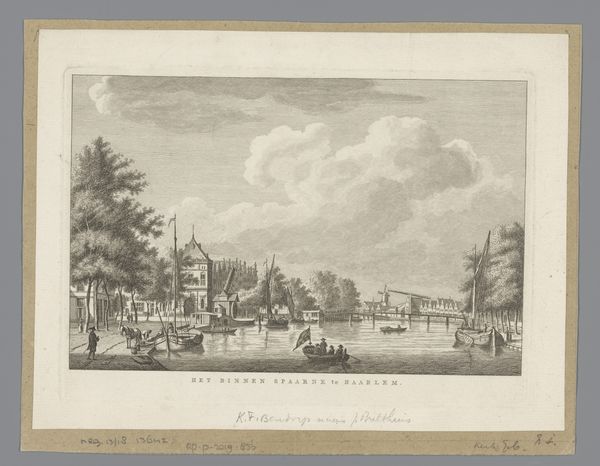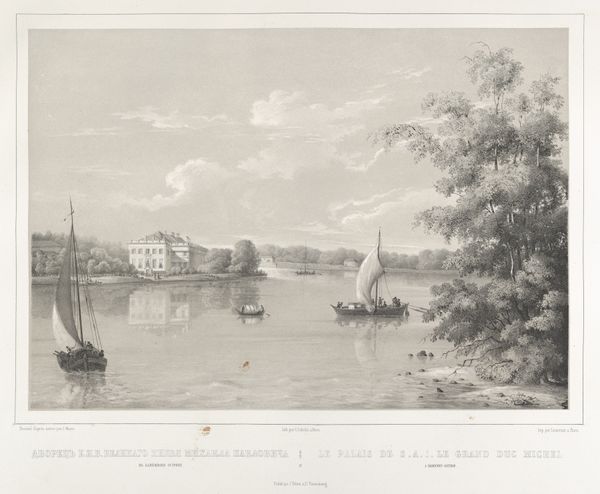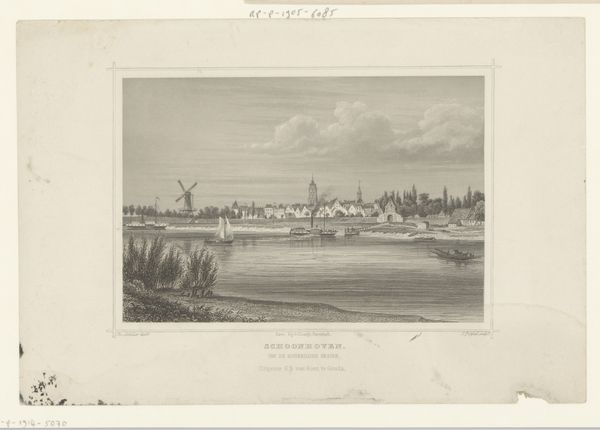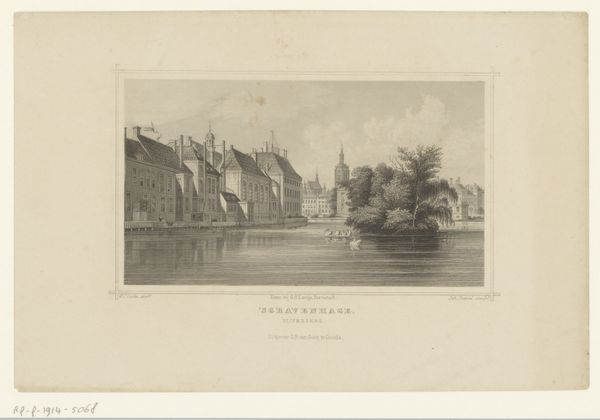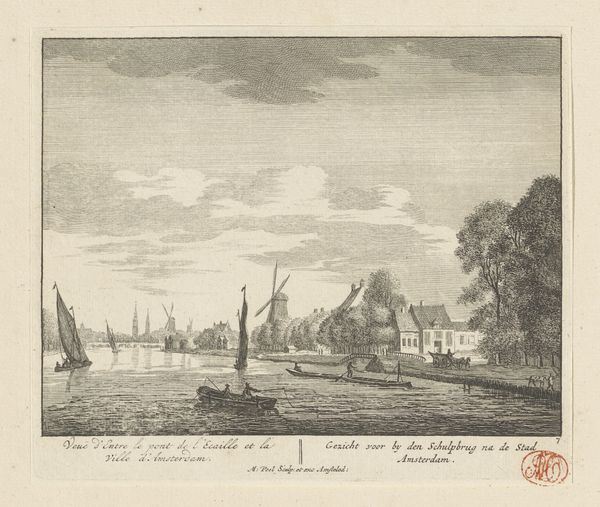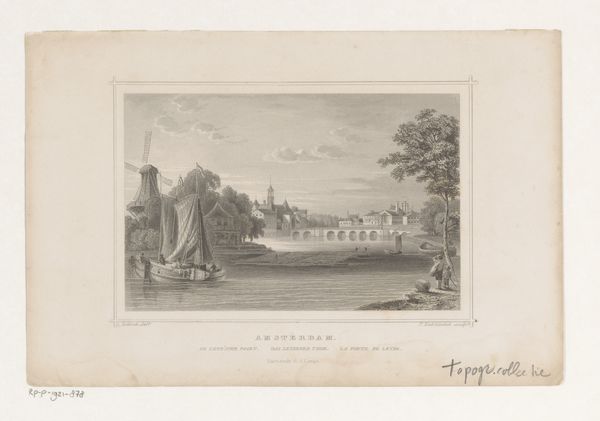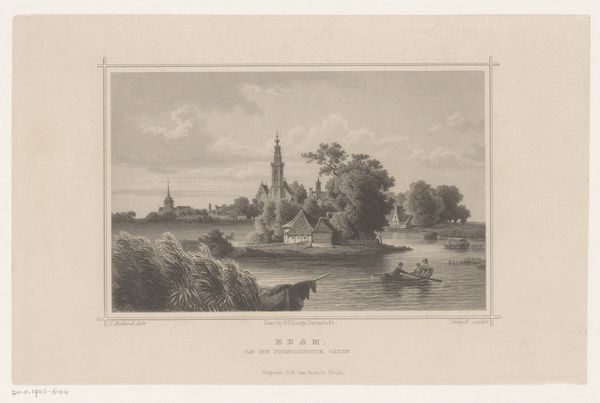
Dimensions: height 168 mm, width 254 mm
Copyright: Rijks Museum: Open Domain
Julius Umbach made this print of Haarlem using a technique known as lithography. It’s a planographic process, which means that the image is neither carved in relief, nor incised. Instead, the artist draws on a flat stone surface with a greasy crayon. The stone is then treated with water, which the greasy areas repel, and printing ink, which adheres to the drawing. This allows for a clean transfer to paper. Look closely, and you can see the wonderful tonalities achieved through this process. Lithography democratized printmaking because it didn't require specialized skills. The artist's hand could directly create the image, rather than relying on a trained engraver. This was perfect for popularizing views like this one, and helped to feed a growing market for images, as people became more mobile and wanted mementos of the places they had seen. So, it’s a seemingly simple print, but also evidence of the nineteenth century’s rapidly changing culture.
Comments
No comments
Be the first to comment and join the conversation on the ultimate creative platform.
